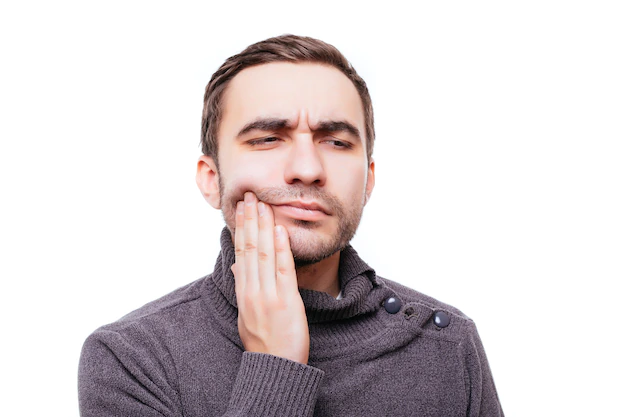Gingivitis is a common form of periodontal disease that affects the gums. It is characterized by inflammation of the gums and can lead to bleeding, pain, and tenderness. If left untreated, gingivitis can progress to more serious forms of periodontal disease. In this article, we will discuss the causes, symptoms, and treatment of gingivitis.

Causes of Gingivitis
There are a number of factors that can contribute to the development of gingivitis. These include:
Plaque:
Plaque is a sticky film of bacteria that constantly forms on our teeth. If not removed, plaque can harden and become tartar. Tartar is much more difficult to remove and can cause irritation and inflammation of the gums.
Poor Oral Hygiene:
Poor oral hygiene is one of the most common causes of gingivitis. If you do not brush and floss your teeth regularly, the plaque will build up and lead to inflammation.
Smoking:
Smoking is another major risk factor for gingivitis. Tobacco use can irritate the gums and decrease the flow of blood to the tissues. This can make it more difficult for the gums to heal and repair themselves.
Systemic Diseases:
Certain systemic diseases, such as diabetes, can increase your risk of developing gingivitis. This is because these diseases can cause changes in the gum tissue that make it more susceptible to infection.
Hormonal Changes:
Hormonal changes, such as those that occur during pregnancy or puberty, can also lead to gingivitis. These changes can make the gums more sensitive and prone to inflammation.
Dry mouth: Dry mouth is a condition in which there is not enough saliva in the mouth. Saliva is important because it helps to remove food and plaque from the teeth. If you have a dry mouth, the plaque will build up and lead to gingivitis.
Certain Medications:
Certain medications, such as those for high blood pressure, can cause Dry mouth is a condition in which there is not enough saliva in the mouth. Saliva is important because it helps to remove food and plaque from the teeth. If you have a dry mouth, the plaque will build up and lead to gingivitis.

Symptoms Of Gingivitis
The most common symptom of gingivitis is bleeding gums. This can occur after brushing or flossing your teeth. The gums may also be swollen, tender, and red. In some cases, they may also be receding. Gingivitis can also cause bad breath or a foul taste in the mouth.
If you notice any of these symptoms, it is important to see a dentist as soon as possible. Gingivitis is a reversible condition, but if it is left untreated, it can progress to more serious forms of periodontal disease.
Treatment Of Gingivitis
The best way to treat gingivitis is to brush and floss your teeth regularly. This will help to remove the plaque and bacteria that are causing the inflammation. It is also important to see a dentist for regular cleanings. They can remove tartar that has built up on the teeth and gums.
In some cases, your dentist may prescribe antibiotics to help clear the infection. They may also recommend a mouthwash or toothpaste that contains antibacterial agents.
If you have gingivitis, it is important to practice good oral hygiene and see your dentist regularly. With early diagnosis and treatment, gingivitis can be reversed. However, if it is left untreated, it can lead to more serious forms of periodontal disease.

How Often Should You See A Dentist For Preventive Care?
See a dentist for preventive care every six months to keep your teeth and gums healthy. By visiting your dentist regularly, you can treat gingivitis and other dental problems before they become more serious and expensive to fix.
During your preventive care appointment, your dentist will clean your teeth and remove any plaque or tartar buildup. They will also check for signs of gum disease, tooth decay, and other oral health problems. If necessary, they may recommend treatments to keep your mouth healthy and prevent future dental problems.
What Is The Best Way To Brush Your Teeth?
The best way to brush your teeth is to use a soft-bristled toothbrush and fluoride toothpaste. Brush your teeth twice a day, using gentle circular motions. Be sure to brush all surfaces of your teeth, including the front, back, and chewing surfaces. Spit out the toothpaste after brushing.
What Is The Best Way To Floss Your Teeth?
The best way to floss your teeth is to use dental floss or an interdental brush. Floss at least once a day, using gentle back-and-forth motions. Be sure to floss between all of your teeth, including the ones in the back of your mouth.
Conclusion:
Gingivitis is a common form of periodontal disease that affects the gums. It is characterized by inflammation of the gums and can lead to bleeding, pain, and tenderness. If left untreated, gingivitis can progress to more serious forms of periodontal disease. In this article, we discussed the causes, symptoms, and treatment of gingivitis. Good oral hygiene practices at home can treat gingivitis. However, if you have any concerns about your oral health, please see your dentist or dental hygienist for an evaluation.
You May Also Like The Following:
How To Get Rid Of Stomach Gas: 5 Natural Home Remedies
How To Lose Weight In A Week: 10 Nutritionist Tips To Include